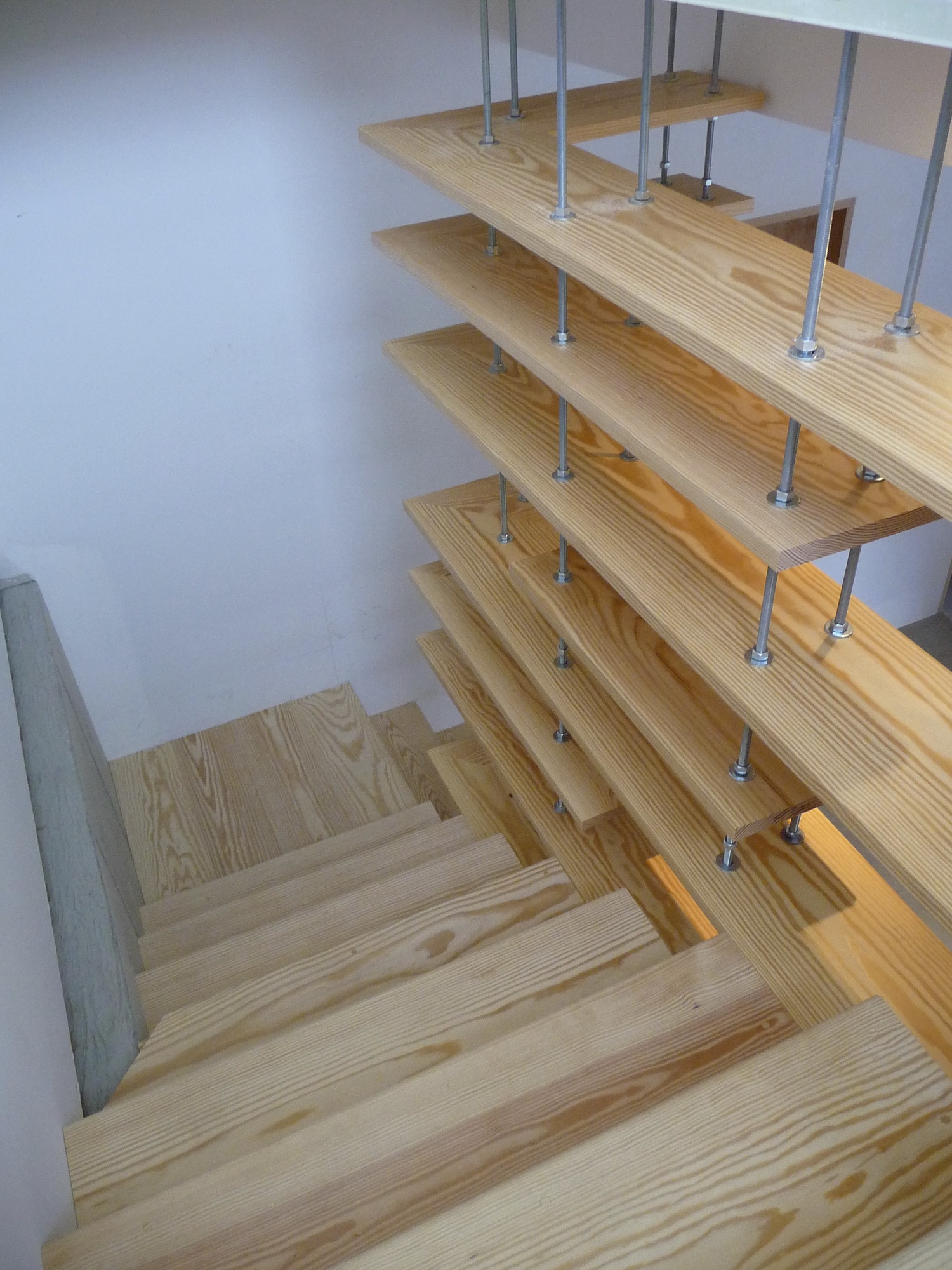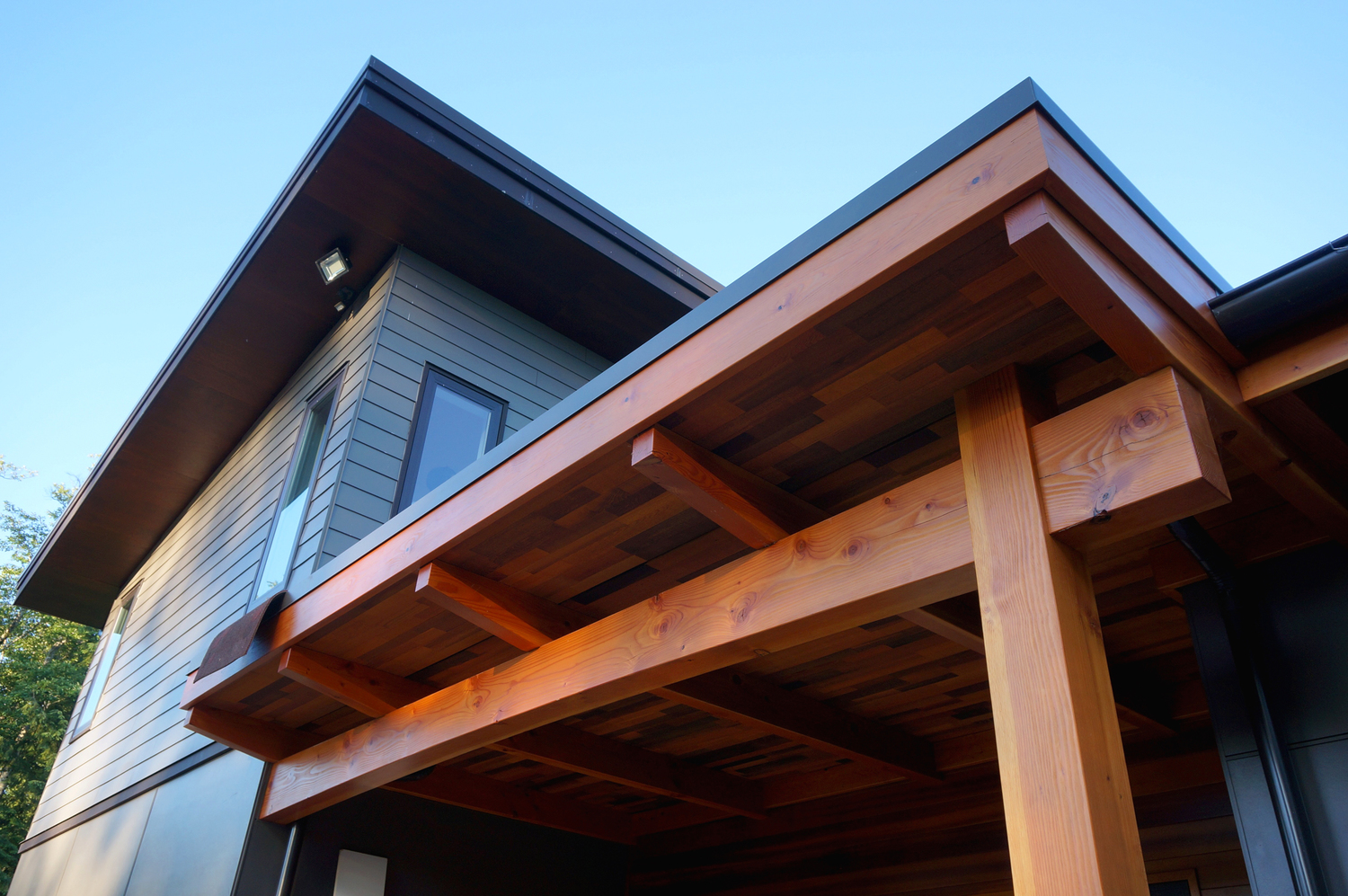




Written by Aaron Westgate
I became excited about sustainable design during my time at Pomona College, where I majored in Environmental Analysis with a focus on energy end-use efficiency in buildings. That foundation led to several internship/work experiences that wove between academic research-based sustainability and hands-on, applied design and construction. I spent 2 summers working at Rancho Mastatal in Costa Rica, helping to design and build several structures from locally sourced bamboo, teak, cob, and stone. That experience led to an internship at Yestermorrow Design/Build School in Vermont, an amazing organization with world-class instructors teaching all manners of sustainable design and construction. From there, I went to work for Rocky Mountain Institute in Snowmass, Colorado, where I was very fortunate to serve as the Special Aide to Amory Lovins, the Institute’s founder and Chief Scientist. That experience was a profound educational whirlwind, and I learned a tremendous amount from Amory’s brilliant understanding of whole-systems design strategy. It also helped me realize that I was far more inspired by applied design than research/consulting, and I switched my focus fully to creative work.
I’m passionate about design because it feels boundless, in that I don’t know that you ever become a master… I’ll be learning and growing in this field for decades to come. Every project has unique characteristics to navigate, from client needs to location and aspect. This kind of ‘work’ is what keeps me up tinkering until the wee hours of the night without realizing how long I’ve been at it… to me, that is the best sign that you’re doing something in line with your passions.
I personally don’t care much for the word ‘sustainable’ when it is applied to design, in that it is too weak of a standard. As architect Bill McDonough put it, ‘if you were to describe your relationship with your wife as ‘sustainable’, it really isn’t a very good sign.’ Sustainability has to be a baseline given, a prerequisite, if we’re even going to consider a future for humanity. I think people in the field generally have grown to hold some version of that perspective, and the leaders and designers who I find most inspiring are pushing much deeper design paradigms, in the realms of regeneration and resilience. People like Ben Falk, Geoff Lawton, and Jason McLennan are all inspirations in that respect… the fundamentals of deep permaculture philosophy and the idea of The Living Building Challenge are profound and path-breaking, and are authentically pushing past the realm of baseline ‘sustainability.’ Given the momentum of the world’s economy, we need some deeply transformational thinking to turn the tide towards real sustainability.
In terms of personalizing the standard tenets of sustainable design, the place where I feel I have the most power to influence construction projects is in the direction of beauty and quality. Any building project has a tremendous environmental footprint, and yes we should be making them efficient and sourcing materials responsibly, but I feel focusing on quality design and construction is just as, if not more, important. A home built without any ‘green’ features or gadgets is far more sustainable than a flashy eco-home IF it is built in such a way that it will exist for 100+ years and people will love the space and want to take care of the structure. A lot of early Passive House projects are drearily dark, boxy, and boring, and don’t facilitate a feeling of vitality…. no matter how efficient they are, you can pretty much guaranty that they’ll be heavily remodeled or torn down in the not-too-distant future when another person moves in and doesn’t like the feel of the space.
I’m really drawn to the role that buildings play in our well-being, and feel quite sensitive to the ways in which the light, space, and flow of a home affect the inhabitant’s well being. If those elements are done well, people will love the space, and it will provide decades of value, enjoyment and shelter.
My company, Westgate Design|Works, specializes in residential design in the Pacific Northwest. I work closely with homeowners, builders, and engineers to design remodels, additions, and new-construction homes. I aim to provide a modern and intuitive approach to the design and construction process. My approach allows clients to clearly visualize their project throughout its development, and better understand the feel and dynamics of the building before construction begins. I believe that better visual communication creates better plans, and better plans create better buildings. My workflow is a customized blend of using SketchUp Pro and Layout to develop detailed 3D models and builder-friendly construction drawings. I also do a good bit of woodworking and custom fabrication, but the majority of my client-driven work is focused on design.
I don’t do a lot of product sourcing for my clients, but generally set the direction for overall material considerations that aim for longevity and local sourcing wherever possible. Beyond actual product specification, product assembly and installation is just as important. Designing good details for rainscreens, for proper ventilation flow paths, for thermally intelligent framing design, for air-tightness, etc… the devil really is in the details, and when construction assemblies are done following best-practice guidelines, they’ll last much longer and the building will function better. The difference is good design on the front end, and attentive care during installation. I primarily work with a close network of really awesome builders in the Bellingham, WA area who I generally trust to care deeply about making great buildings. I’m really not interested in working with profit-driven developers whose business model relies on speed and sloppiness.
People can do simple things right now to make a space more sustainable and eco-efficient, like a full LED lighting retrofit which is now easy and relatively cheap, and the light quality is finally really good, no more harsh blue tones. I’m happy that we’re leapfrogging past CFLs, which exacerbate the mercury problem. Another option is air-sealing and insulating older houses, which is relatively intuitive work, and crafty homeowners can do a lot of it themselves if they’re willing to get dirty. I recently swapped out the old gas furnace in my home for a 2-zone minisplit heat pump, which is an amazing upgrade, and was supported with utility incentives. The new heat pumps are incredibly efficient, easy to program, and even wifi-connected to you control them from your phone. If you have decent solar access on your roof, it is often revenue-neutral to finance photovoltaics. Other tips… Ride your bike! Eat less cheap meat! Buy less junk!
Sustainable design is important because unsustainable design is disastrous. We’re starting to clearly see the global consequences of failed designs, from the built-environment to the transportation sector to the interactions of policy and equity issues. As my old boss Amory Lovins would say, “There is no silver bullet, but there is certainly silver buckshot.” I believe that one key component of that buckshot is mindful design that seeks to solve problems in an integrated approach, where single expenditures yield multiple benefits; good design is a fundamental requirement for building a livable future. And I think a lot of people are coming to understand that… it’s really a huge empirical test in the history of human evolution, to see if we’re able to learn how to design our way out of the mess that we’ve created. I’m excited to see what happens.